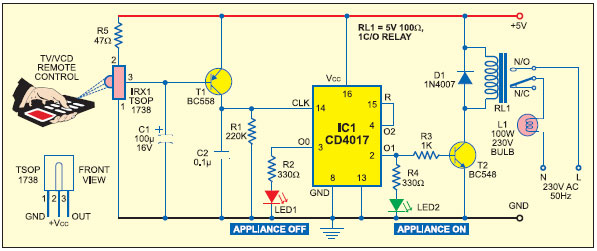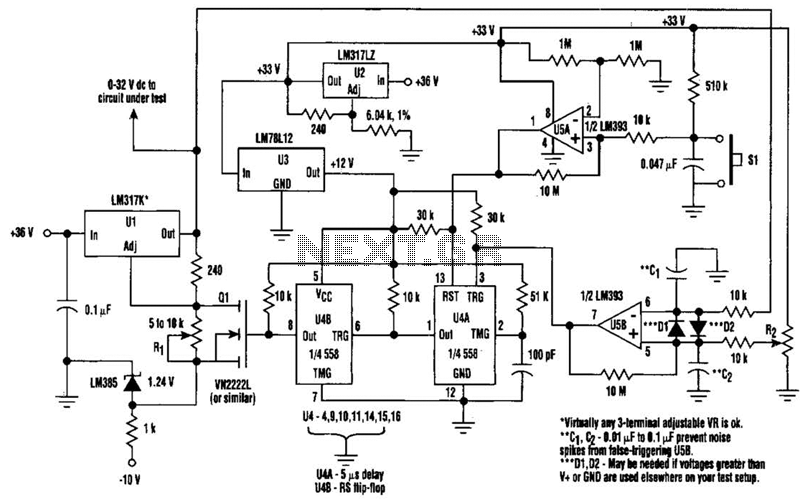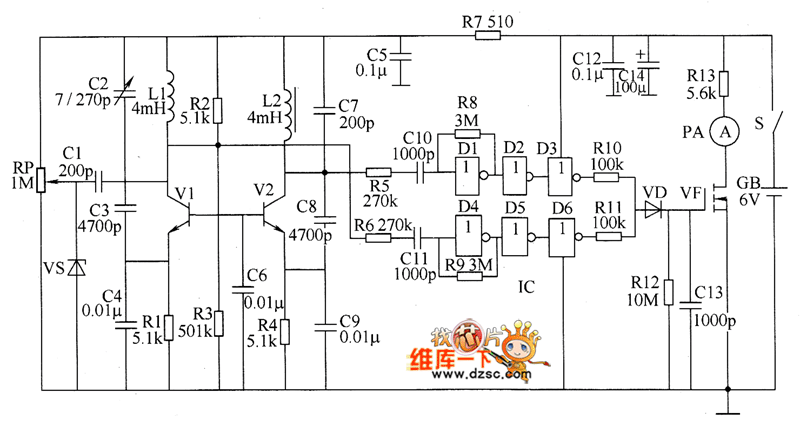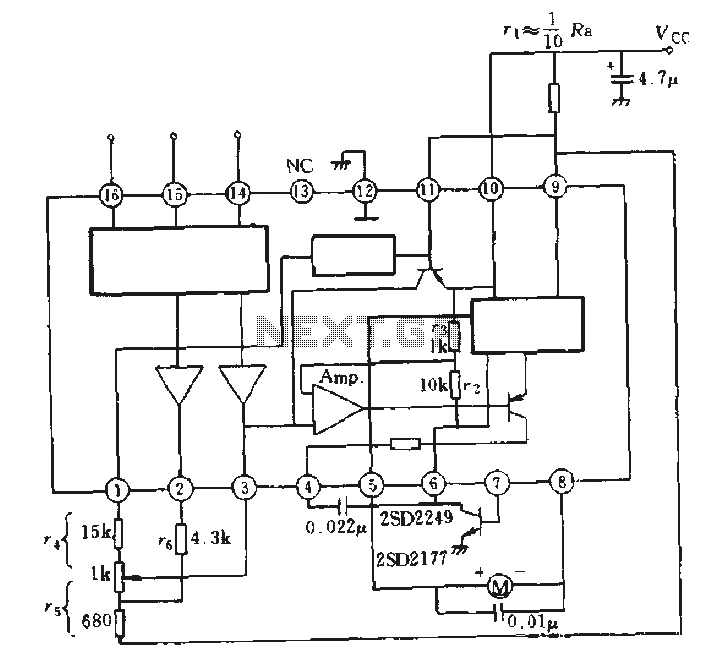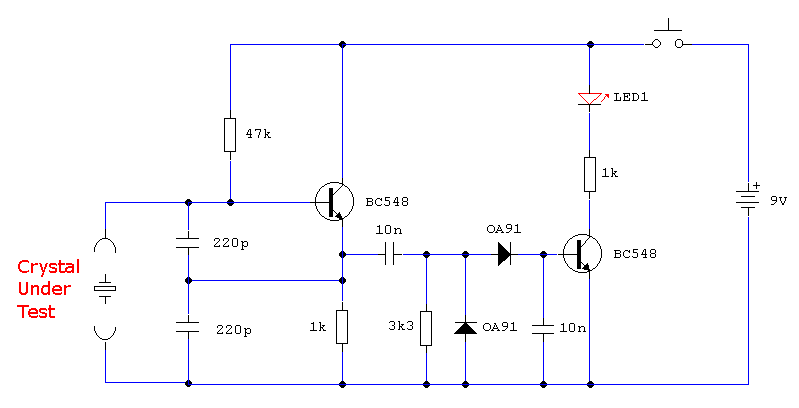
8-channel temperature detection circuit
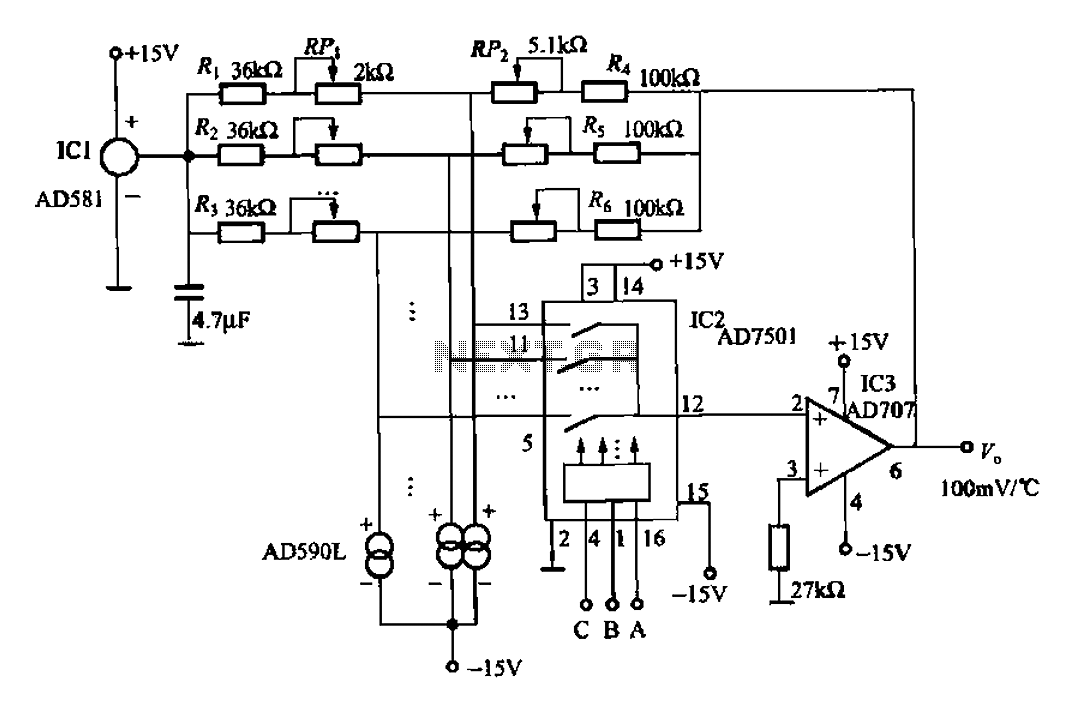
An 8-channel temperature detection circuit capable of monitoring eight different temperature sensors. The D581 serves as a 10.00V precision reference voltage source, providing a stable reference level for the detection circuit. Resistors RPi, RP2, and R4, along with the AD590L temperature sensors, are configured in a manner identical to the other seven channels. RPi and RP2 allow for adjustable high and low temperature thresholds. The AD590L outputs an electrical signal that is routed through an 8-to-1 electronic switch (IC2) to select one of the temperature channels for further processing. The selected signal is then amplified by operational amplifier IC3, which has an output sensitivity of 100mV/°C. The input to IC2 is controlled by binary data (000-111) from pins C, B, and A, enabling the selection of one of the eight inputs to be output as a signal. IC3 is characterized by a common-mode rejection ratio (CMRR) of 140 dB and an open-loop gain of 13 V/V, typical for instrumentation operational amplifiers.
The 8-channel temperature detection circuit is designed to facilitate precise temperature monitoring across multiple channels, making it suitable for applications requiring real-time temperature data from various sources. The D581 precision reference voltage source ensures stable operation, minimizing deviations in sensor readings caused by fluctuations in supply voltage.
The configuration of resistors RPi, RP2, and R4 plays a crucial role in setting the operational parameters for temperature thresholds, allowing for customization based on the specific requirements of the application. The AD590L temperature sensors are known for their linear output characteristics, which are essential for accurate temperature measurement. The integration of the 8-to-1 electronic switch (IC2) allows for efficient multiplexing of the sensor outputs, ensuring that only the selected temperature channel is processed at any given time, thus reducing the load on the operational amplifier.
Operational amplifier IC3 is critical for signal conditioning, amplifying the small voltage signals from the AD590L sensors to a more usable level. The specified output sensitivity of 100mV/°C enables straightforward interpretation of the temperature readings, as the output voltage directly correlates with temperature changes. The high CMRR of IC3 indicates its ability to reject common-mode signals, enhancing the accuracy of the measurements by reducing noise interference.
The binary control logic for IC2 allows for flexible channel selection, accommodating various operational scenarios. This feature is particularly useful in applications where different temperature zones need to be monitored sequentially. The overall design of the circuit ensures robust performance, reliability, and ease of integration into larger systems requiring temperature monitoring capabilities.8-channel temperature shown detection circuit, it can be 8 temperature detection.. {D581 is 10. OOV precision reference voltage source, to the detection circuit provides precis ion reference level voltage, Shu, RPi, RP2, R4, AD590L way in which a detection circuit (detection circuit exactly the same way the other seven), RPi, RP2, respectively adjustable high and low temperature degrees; AD590L electric signal output by the 8-to-1 electronic switch IC2 choose to send operational amplifier IC3 amplification, IC3 output lOOmV/cC. IC2 input binary data (ooo-111) by C, B, A side to select one of eight inputs as an output signal out.
IC3 is a typical CMRR of 140 dB, the open-loop gain of 13 V/p, V instrumentation operational amplifiers.
The 8-channel temperature detection circuit is designed to facilitate precise temperature monitoring across multiple channels, making it suitable for applications requiring real-time temperature data from various sources. The D581 precision reference voltage source ensures stable operation, minimizing deviations in sensor readings caused by fluctuations in supply voltage.
The configuration of resistors RPi, RP2, and R4 plays a crucial role in setting the operational parameters for temperature thresholds, allowing for customization based on the specific requirements of the application. The AD590L temperature sensors are known for their linear output characteristics, which are essential for accurate temperature measurement. The integration of the 8-to-1 electronic switch (IC2) allows for efficient multiplexing of the sensor outputs, ensuring that only the selected temperature channel is processed at any given time, thus reducing the load on the operational amplifier.
Operational amplifier IC3 is critical for signal conditioning, amplifying the small voltage signals from the AD590L sensors to a more usable level. The specified output sensitivity of 100mV/°C enables straightforward interpretation of the temperature readings, as the output voltage directly correlates with temperature changes. The high CMRR of IC3 indicates its ability to reject common-mode signals, enhancing the accuracy of the measurements by reducing noise interference.
The binary control logic for IC2 allows for flexible channel selection, accommodating various operational scenarios. This feature is particularly useful in applications where different temperature zones need to be monitored sequentially. The overall design of the circuit ensures robust performance, reliability, and ease of integration into larger systems requiring temperature monitoring capabilities.8-channel temperature shown detection circuit, it can be 8 temperature detection.. {D581 is 10. OOV precision reference voltage source, to the detection circuit provides precis ion reference level voltage, Shu, RPi, RP2, R4, AD590L way in which a detection circuit (detection circuit exactly the same way the other seven), RPi, RP2, respectively adjustable high and low temperature degrees; AD590L electric signal output by the 8-to-1 electronic switch IC2 choose to send operational amplifier IC3 amplification, IC3 output lOOmV/cC. IC2 input binary data (ooo-111) by C, B, A side to select one of eight inputs as an output signal out.
IC3 is a typical CMRR of 140 dB, the open-loop gain of 13 V/p, V instrumentation operational amplifiers.
